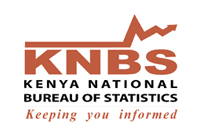East African nation; Kenya’s ICT sector has reported achieved a growth of 12.9 percent over the past year due to an increase in the uptake of mobile banking and Internet use.
Data from the 2019 edition of the Economic Survey indicates that the nation’s economy as well as consumers in Kenya, continue to reap benefits of the billions Kenyan Shillings which service providers, have invested in digital infrastructure across the country.
The Kenya National Bureau of Statistics (KNBS) said that “In 2018, the… ICT sector expanded by 12.9 percent to 390.2 billion Kenyan Shillings supported mainly by growth in the digital economy which includes mobile telephone, uptake of e-commerce and penetration of internet,”.
Value added in the sector, also rose by 6.6 per cent from 109.9 billion Kenyan Shillings in 2017 to 117.2 billion Kenyan Shillings with the country’s total exports in the said sector, growing by 10 percent from 1.26 billion Kenyan Shillings to 1.38 billion Kenyan Shillings.
Mobile continues to be the driving force of the ICT sector as network operators, keep ramping up investments in new base stations, as well as fibre network rollout to rural and peri-urban areas of the country.
Mobile money transfers in Kenya grew by 9.5 percent from 3.6 trillion Kenyan Shillings in 2017 to 3.9 trillion Kenyan Shillings in 2018 and is reportedly on course to cross the 4 trillion Kenyan Shillings mark, by the fourth quarter of the 2018/2019 financial year.
Subscriptions for mobile money services on the other hand, have also seen a marginal increase from 30 million users in 2017 to 31.6 million users in 2018 with the value of mobile commerce transactions rising by 87.2 percent to 6 trillion Kenyan Shillings.
This has in turn, contributed to a widening of financial access, with latest industry data indicating that Kenyans’ access to the formal financial sector has more than doubled in the past decade alone.
The 2019 edition of the FinAccess Household Survey, showed that the number of Kenyans who were excluded from formal finance has reduced to an impressive 11 percent of the population.
Formal financial inclusion now stands at 82.9 percent, a far cry from 26.7 percent which was where it stood in 2006, and complete exclusion has narrowed to 11.0 percent down from the 41.3 percent figure, also recorded in 2006.
The nation’s success in bringing more Kenyans into the formal financial system has been attributed to the increased partnerships between mobile service providers or Internet Service Providers (ISPs) and commercial banks which further fuelled the growth of mobile banking.
The Kenya National Bureau of Statistics (KNBS) also said in its survey that “The ICT sector is characterised by major infrastructure investments, notably deployment of network technologies to facilitate use of fixed and mobile voice and data services,”.
KNBS, further added that “The value of investment by the telecommunication operators increased by 7.3 per cent to Shs41.5 billion, while that of Internet service providers increased by 73.3 per cent to Shs2.6 billion.”





